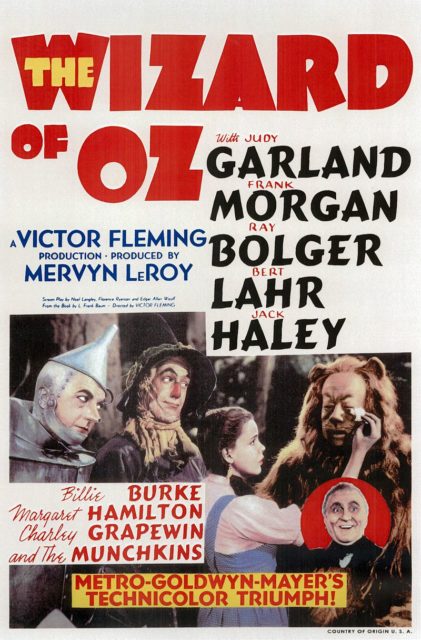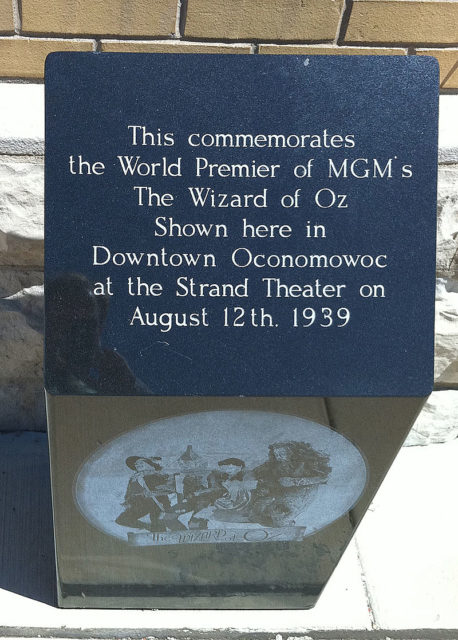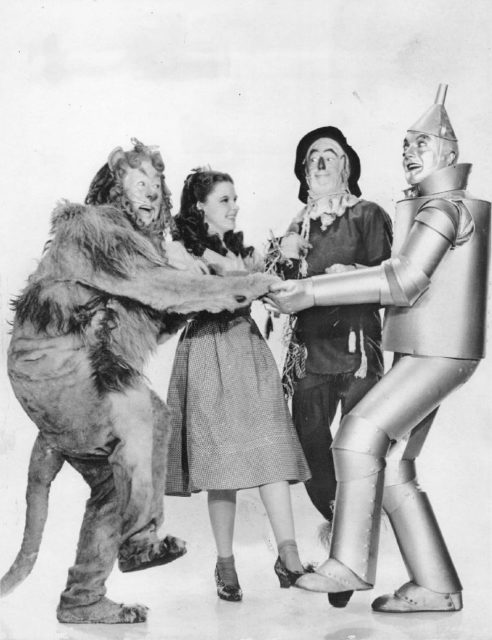When Lyman Frank Baum penned his now immortal story of Dorothy and her adventures in the Land of Oz, he had no way of knowing the effect it would have on the world.
In 1898 Baum began writing the children’s classic, and by 1900 the book, complete with illustrations added by Chicago-based artist William Wallace Denslow, was published by the George M. Hill Company in Chicago.

The Wonderful Wizard of Oz tells the story of Dorothy Gale, a young Kansas girl who is swept away to an enchanted land by a tornado and through all of her efforts to return home, she makes friends that help her defeat a wicked witch and meet the Wizard who will help her get home.
In total, Baum wrote fourteen stories about the Land of Oz, but none became as beloved as the original story. The final instalment, Glinda of Oz, was published in July of 1920, a year after Baum’s death.
The book was received very well by the public as it was one of the first American novels written specifically for children. Since then, it has been retold in countless books, video and stage productions. The original book can be found and read online at http://read.gov/books/oz.html. Since 1908 the story has been retold, celebrated or adapted for film, stage and TV almost every year and there are currently several TV and movie adaptations being completed.
Several lines from Oz that have been incorporated into daily language are, “there’s no place like home”, “I’ll get you, my pretty, and your little dog too!” and “Toto, I’ve a feeling we’re not in Kansas anymore”, as well as references to the releasing of the flying monkeys.
The most famous production of the story is MGM’s 1939 production starring Judy Garland, Ray Bolger, Bert Lahr, Margaret Hamilton and Jack Haley. This was made possible when Baum’s son sold the film rights to MGM for $75,000.

One of the first adaptations was a silent film version distributed by Selig Polyscope Company in 1908. The movie was directed by Otis Turner and Francis Boggs and starred Romola Remus as Dorothy, Joseph Schrode as the Cowardly Lion, Frank Burns as the Scarecrow and George Wilson as the Tin Man.

In this adaptation, which is vastly different from the more familiar stories, Dorothy meets the Scarecrow before she reaches Oz, and Dorothy, the Scarecrow and two farm animals, a goat and a cow, are whisked away to Oz in a haystack rather than the farmhouse. There are no Munchkins and the Wicked Witch of the West, who is called Momba, is actively trying to defeat the Wizard, who posts signs in the forest to get help in defeating the witch. A poster is discovered by Dorothy and her troupe which leads them to look for the Wizard.
Toto is enlarged By ‘Glinda the Good’ to make him a better protector for Dorothy. The witch’s castle is defended by giant frogs as well as human soldiers. Dorothy destroys Momba with water before she reaches the Emerald City. The Wizard makes the Scarecrow the President of Oz and then leaves in a balloon without Dorothy. The Scarecrow and the Tin Man do a little dance and Dorothy seems to be stuck in Oz forever.

There are some disputes regarding the film actors who starred in the movie as the credits have been lost to time. It has been reported that Bebe Daniels was the actress who played Dorothy, but this is unlikely as Daniels was in California at the time. It is also believed that this version of the story was originally included in Baum’s The Fairylogue and Radio-Plays which was a stage and film show presented in 1908 by Baum.
Some dispute that the thirteen-minute silent movie was ever a part of Baum’s production. Because the film footage from the Fairylogue has decomposed due to age, it may never be ascertained how the 1910 silent version was related to Baum’s creation at all.
